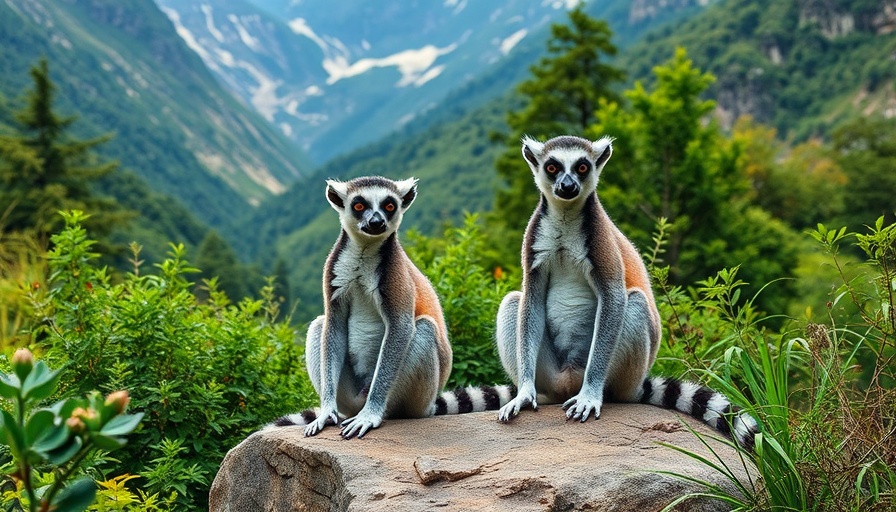
Global Commitment to Biodiversity: What COP16 Means for Our Planet
The recent COP16 UN Biodiversity Conference in Rome concluded with a monumental agreement among participating nations to contribute $200 billion annually for biodiversity conservation by 2030. Despite the celebratory atmosphere surrounding the deal, notable criticisms surfaced regarding its sufficiency and the details of implementation, especially for developing nations.
Understanding the Financial Commitment
Under the new accord, $20 billion will be allocated each year for conservation efforts in developing countries, rising to $30 billion by 2030. COP16 President Susana Muhamad, filled with emotion, lauded this as a “historic day.” However, concerns linger amongst environmental activists and leaders about the lack of specific mechanisms to ensure these funds are effectively utilized without bureaucratic obstacles. Juan Carlos Alurralde Tejada from Bolivia expressed frustration over the potential diluting of biodiversity commitments, calling for immediate action as environmental degradation accelerates.
What’s at Stake? The Urgency of Biodiversity Preservation
The backdrop of the COP16 discussions included a stark reminder that global wildlife populations have plummeted by 73% since 1970. Max Fontaine, Madagascar’s environment minister, noted the dire challenge facing conservationists: halting biodiversity loss by 2030 seems almost unattainable if current trends continue. This raises questions about the effects of ongoing deforestation and climate change which threaten to exacerbate the situation.
Are We Doing Enough? Insights from International Perspectives
Other delegates echoed the sentiment that while the COP16 agreements marked a step forward, they may not significantly impact the pressing biodiversity crisis. Some leaders praised the collaboration but felt urgent action needs to accompany promises. Belgium's climate minister, Jean-Luc Crucke, remarked that for humanity to save nature, sincere cooperation at global levels is crucial. A lack of determination in addressing the climate crisis remains a profound concern, with pressing issues deferred concerning subsidies that harm ecosystems.
The Role of Indigenous Peoples in Biodiversity Conservation
The agreements made at COP16 are positioned within the larger framework established during previous conventions, specifically honoring Indigenous Peoples' crucial role in biodiversity management. The collective efforts seek to balance the demands of economic growth with the responsibility to nurture and protect our planet’s ecosystems.
Concrete Steps Forward: The Cali Fund
One landmark element introduced during COP16 was the launch of the Cali Fund, which seeks to mobilize investments from global businesses making commercial use of nature’s genetic resources. This approach is a novel strategy to ensure that the entities benefiting from biodiversity contribute back to its conservation. The fund aims to allocate 50% of its resources to Indigenous communities, recognizing their invaluable role as custodians of the planet.
What Lies Ahead? Future Predictions for Biodiversity Initiatives
As nations move forward with the commitments made at COP16, several critical steps must be taken. These include establishing mechanisms for tracking financial distributions and developing indicators that assess progress toward the ambitious biodiversity goals laid out in the Global Biodiversity Framework. The path ahead is filled with challenges, yet if successful, it could lead to a significant reshaping of how humanity interacts with its environment.
Why This Matters: Making an Impact Locally
Every person holds a stake in the health of our planet. Understanding the dynamics behind global conservation efforts can encourage local actions that complement these initiatives. From reforestation efforts to sustainable agricultural practices, communities can create tangible changes that contribute to the larger goal of biodiversity preservation.
Join the Conversation: What Can You Do?
Staying informed and engaged in local environmental issues is crucial. Individuals can support conservation efforts through community involvement, advocating for local policies that prioritize sustainability, and even participating in initiatives directly related to biodiversity preservation. The call for action is clear—each of us can be a part of this global movement to protect our planet.
In conclusion, while COP16 has laid the groundwork for significant financial support towards biodiversity conservation, the real challenge lies in translating promises into action. Staying active in advocacy and supporting community conservation efforts can help turn the tide against biodiversity loss.
 Add Row
Add Row  Add
Add 




Write A Comment